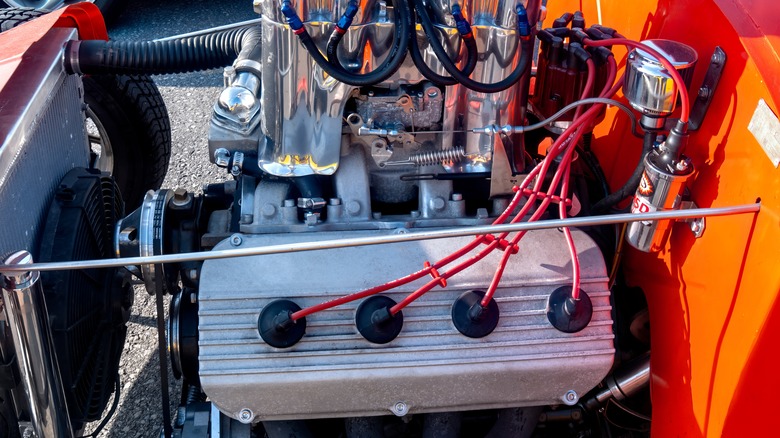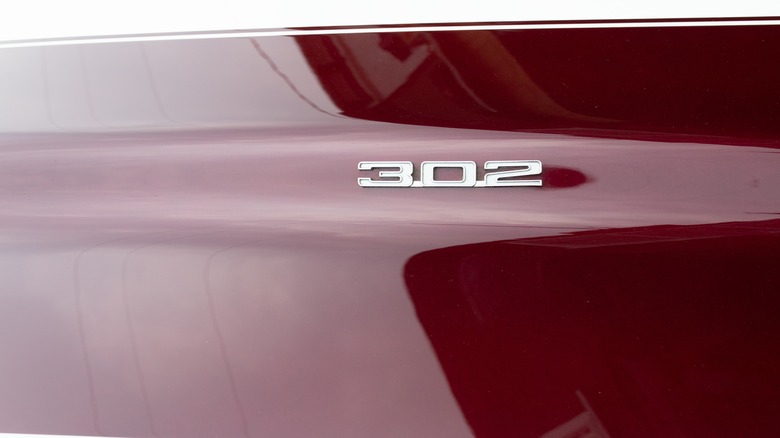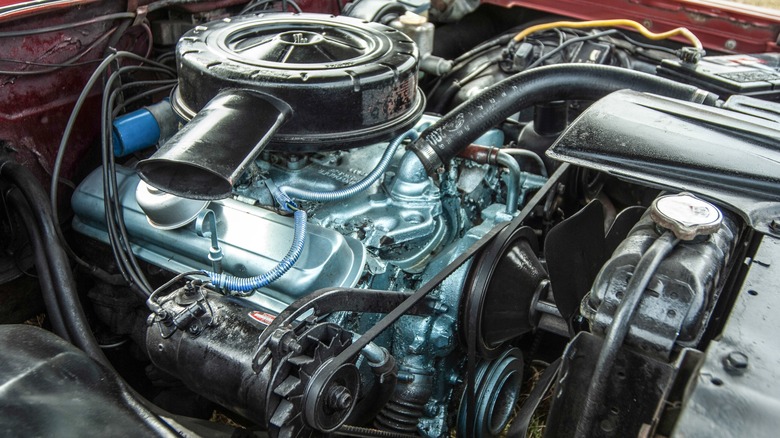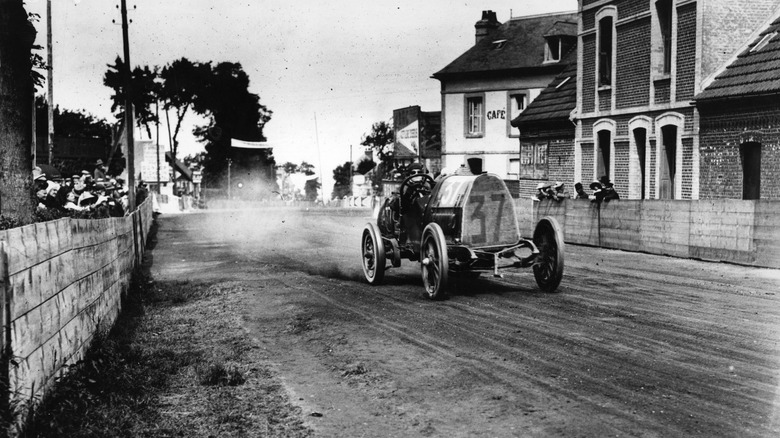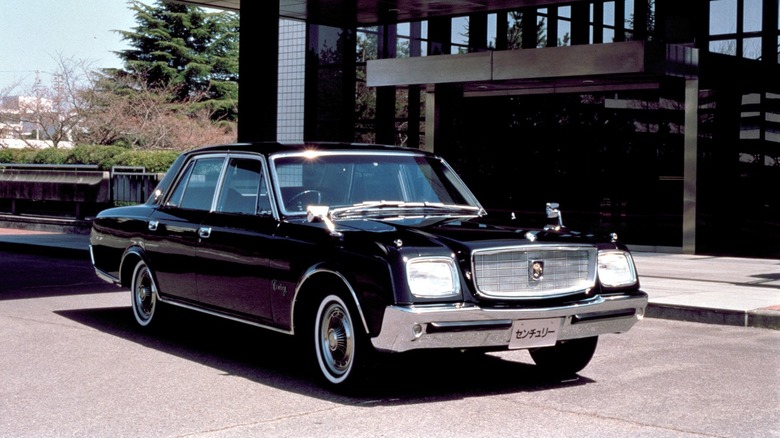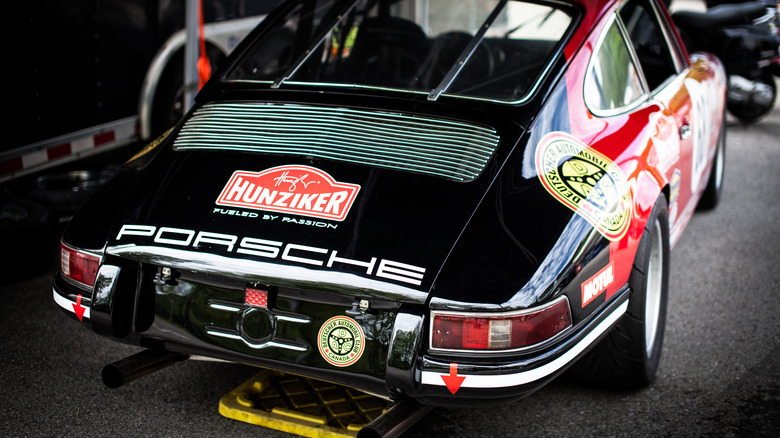5 Hemi Engines You Probably Haven't Heard Of
It's only natural for minds to run to Chrysler when the word "hemi" comes up in conversation. While Chrysler didn't invent the hemispherical combustion chamber engine, with that honor going to Allie Ray Welch in 1901, Chrysler was responsible for bringing the unique engine design to the masses in their production cars a half-century later. Since the "FirePower" V8 arrived on the scene, Chrysler has refined their hemi formula over three generations and 73 years, almost inseparably tying the brand to the engine type. (It's worth pointing out here that "HEMI" in all caps is the Chrysler engine brand name, while "hemi" is a shorthand way to refer to any hemispherical engine.)
Little do most people know, many brands, with names that you almost certainly know, have also experimented with producing hemispherical combustion chamber engines.
What is a hemi engine anyway? Well, it boils down to a unique combustion chamber design and the beneficial characteristics that it brings to the table. Unlike traditional engines with a typical combustion chamber design, hemi engines feature half-dome-shaped combustion chambers. The revised combustion chamber design has a number of benefits from an efficiency and performance standpoint. Hemis generally use top-center-mounted spark plugs, reducing the time that it takes for the air/fuel mixture to burn once ignited, leading to better combustion efficiency. The shape also allows for larger-than-normal intake and exhaust valves, which provide superior cylinder head flow compared to other engine types. Those benefits proved to be huge selling points of the hemi design when the Chrysler HEMI line was first launched, and continue to be to this day. The hemi engine design was so tempting that many manufacturers — including Chevy, Oldsmobile, and even Fiat — jumped on the trend as well.
Chevrolet hemi 302 crossram
In the late 1960s, the fight between Ford, GM, and Chrysler was at a boiling point — both on the dragstrip and on the streets. It got even more heated when the pony car era kicked off in 1964 and quickly became one of the most popular vehicle segments in the U.S. at the time. But, until the end of the decade, there wasn't a dedicated racing series for the Big Three to showcase their machinery on world-renowned circuits in a pro series. That is, until the SCCA Trans-Am Series began in 1966. In the beginning, Ford was an unstoppable force in the 5.0-liter category, winning the championship with the legendary Mustang. Ford took the manufacturer's title in 1967 as well, albeit with growing competition from Chevy teams with their Z/28 Camaros.
For 1968, GM wanted to dethrone the reigning champions and went to extra lengths to do so. The Z/28 Camaro was specifically developed to compete with their primary challengers Ford and Chrysler on the track, with a 302 cubic inch V8 acting as the heart of the beast. While Mark Donohue would go on to dominate the field for the 1968 and 1969 seasons with a 302 Chevy small-block under the hood, there's no way that they could have known of that success at the end of the 1967 season. So, Chevy's engineering team went about designing an experimental 302 small block with hemispherical combustion chambers, revised pistons, hemi camshaft, magnesium valve covers, and a high-flow crossram intake. Ultimately, the experimental hemi was never needed, as the standard Chevy 302 did a very good job of keeping Fords behind in Trans Am for years to follow. As a result, there is only one Chevy 302 hemi known to exist.
Oldsmobile W-43 V8
Despite having "old" in its name, Oldsmobile was one of the most forward-thinking American automakers of the 20th century. Many of the technological advancements that we take for granted in modern vehicles were seen in Oldsmobiles before anyone else. Some of the brand's most influential "firsts" include speedometers, standard windshields, automatic transmissions, and production turbocharged engines. The same can be said about engine technology, with Oldsmobile being credited for building the first monobloc V8 engine in 1929 and the first high-compression overhead valve V8 in 1949 with the introduction of the legendary Rocket V8.
With so much innovation to their credit, it is no surprise that Oldsmobile kept trying to push the forward momentum into the muscle car era of the 1960s — a time when all American manufacturers were experimenting with unorthodox engine technology to stay ahead of the competition. At the end of the decade, the Chrysler 426 HEMI was still the king of the streets and the track, and Oldsmobile didn't like that. In response, they began developing an experimental engine, codenamed the W-43, behind the scenes in an attempt to dethrone Mopar.
One major drawback of hemi engines is their inability to accommodate four valves per cylinder due to the extreme valve angles that would be required to pull it off. While still taking the approach of a hemi design, Oldsmobile created cylinder heads for the W-43 with a pentagonal design, allowing them to feature four valves per cylinder. Olds also used domed pistons for the engine, along with centrally mounted spark plugs, just like a traditional hemi. The 455-cubic inch W-43 was reportedly capable of an impressive 440 horsepower. Despite the W-43's promise, the experimental project was shelved before it reached production, thanks to stricter emissions laws in the early 1970s.
Fiat 16L hemi four-cylinder
It's hard to think of a better spiritual antithesis for Chrysler than Fiat, especially in the 1960s when the former was putting out fire-breathing muscle cars like the Dodge Charger while Fiat was building the 500. Ultimately, sensibility won in the end, with Fiat buying Chrysler outright in 2014. While Fiat is known in the modern age as a company that offers compact electric cars — at least in the U.S. — their extensive history is filled with successful racing efforts, both independently and later with the help of Carlo Abarth. One of the Italian brand's first major motorsport successes came in 1907, nearly a half-century before Formula 1 became an official racing series.
Before a racing championship was organized by an official governing body, automobile manufacturers from around the world, but primarily Italy and France, began to push each other to see who could create the fastest car around tracks throughout Europe and the United States. Fiat was one of the first manufacturers to participate, taking place in their first race in 1900. In the early 1900s, French manufacturers were a dominating force in Grand Prix racing, spurring Italian manufacturers to step up their game. Fiat did just that when they released their 1907 challenger, the 130HP F-2. At the heart of their new car was a massive 16-liter four-cylinder that produced 130 horsepower — over twice the power of their previous car, the Fiat 60 HP. The monstrous engine used innovative engine technologies including hemispherical combustion chambers, overhead valves, and a Simms-Bosch magneto ignition. The 130HP F-2 wiped the floor with the competition in the 1907 Targa Florio race in Sicily, establishing Fiat as a major player in Grand Prix racing.
Toyota V engine
By the mid-1960s, the success of Chrysler's HEMI engines was felt across the world, reaching as far as the opposite side of the Pacific in Japan. At that point, the Toyota Motor Company had only been around for 30 years but had already established itself as a force in the worldwide automotive market. Toyota took note that large and stately cars were selling well in the United States at the time and wanted to create one of their own. While the new car was inspired by the likes of Cadillac and Buick, Toyota wanted an executive car that was Japanese built from bumper to bumper. The car was eventually named the Crown 8 when it was introduced in 1964. There was an issue in the development stage, though; they didn't have an engine that would get the job done.
Prior to the development of the Crown Eight, no Japanese manufacturer had ever built a production V8 engine, so they referenced multiple American V8s as a template. Toyota also brought in a team from Yamaha to assist with the engine development. The result was an amalgamation of technologies pulled from different American engines and tied together to suit a Japanese market. The Toyota V, as the engine was called, was an all-aluminum pushrod V8 that featured hemispherical combustion chambers and an astronomically high 9.0:1 compression ratio. In Japanese fashion, the V was only 2.6 liters in displacement, only allowing it to make 114 horsepower. Despite its lack of power, it served the Crown 8 well, eventually being reworked to produce 148 horsepower in the legendary Toyota Century in 1967. Variations of the V hemi would continue to power Toyotas until 1997.
Porsche air-cooled flat-six
Germany doesn't exactly spring to mind when it comes to hemispherical combustion chambers, as the general sentiment is that they are an American affair. However, Germany is home to one of the most impactful auto manufacturers in the world that also has an extensive history of building hemi engines — Porsche. In fact, hemispherical combustion chambers were used in Porsche's most iconic and widely used engine for over three decades, the air-cooled flat-six cylinder.
Porsche is a company that is known famously for incremental improvement and clinging onto their history, and their use of the boxer engine is a perfect example of that sentiment. The history of Porsche's flat engines can be traced all of the way back to the Volkswagen Beetle, which used a rear-mounted, air-cooled, 1.1-liter flat-four cylinder engine that produced a then passable 35 horsepower. From a timeline perspective, the Beetle was released in the midst of World War II. The initial Porsche flat-four was inherently smooth-running due to its design, had fantastic thermal efficiency, and lowered the center of gravity for better handling characteristics and safety. The air-cooled flat engine design worked well in the Beetle and in Porsche's early cars like the 356, so Porsche kept building them, all the way up to 1993.
A six-cylinder variant of the Porsche flat engine was introduced in 1963, under the hood of the Porsche 901, later renamed the 911. Legendary Porsche engineer Hans Mezger was responsible for the engine's design, which featured hemispherical combustion chambers, SOHC cylinder heads. Hemispherical isn't quite semantically correct, though, as the Porsche flat-six combustion chambers were technically only 30 percent of a sphere instead of 50 for better combustion efficiency.
